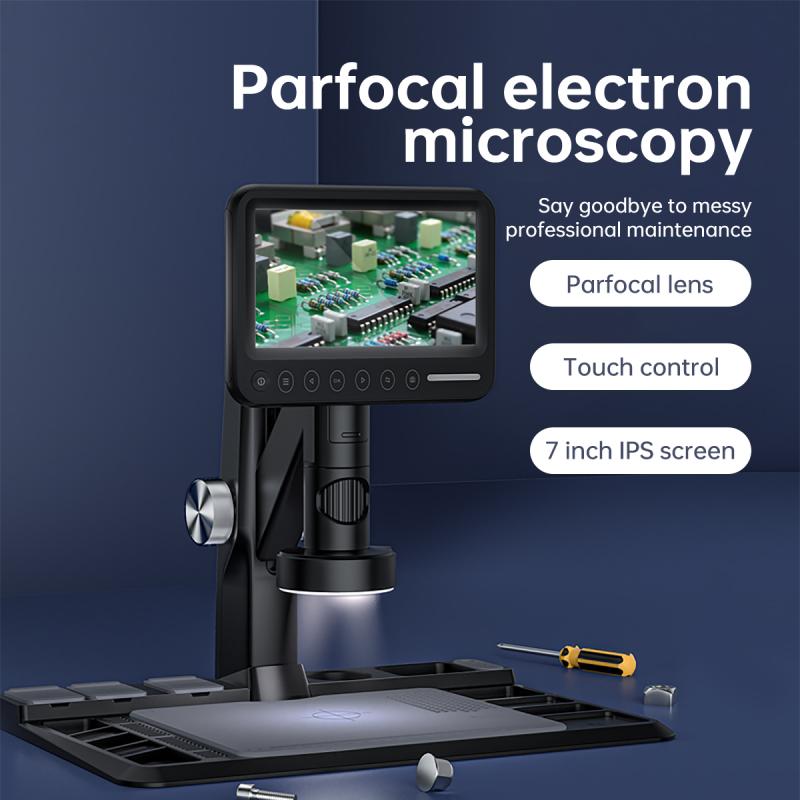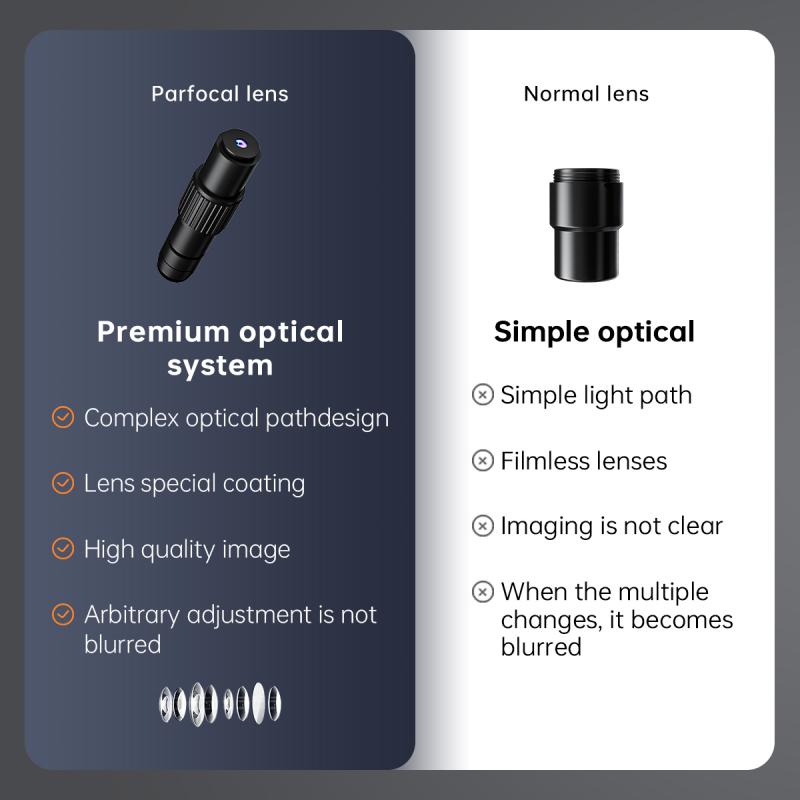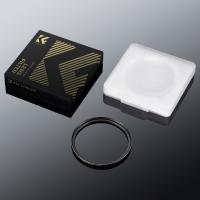How To Observe Pollen Grains Under Microscope ?
To observe pollen grains under a microscope, start by collecting a sample of the pollen you want to study. This can be done by gently tapping a flower or plant onto a clean glass slide. Next, add a drop of water or a suitable mounting medium to the slide to help keep the pollen grains in place. Carefully place a coverslip over the sample, taking care to avoid trapping air bubbles.
Once the slide is prepared, place it on the stage of the microscope and adjust the focus to bring the pollen grains into view. Start with a low magnification objective lens and gradually increase the magnification as needed. Use the fine focus adjustment to achieve a clear image of the pollen grains.
To enhance the visibility of the pollen grains, you can use stains or dyes specifically designed for pollen observation. These can help highlight the different structures and features of the grains. Additionally, adjusting the lighting conditions, such as using darkfield or phase contrast microscopy, can provide better contrast and detail.
Remember to handle the microscope and slides with care to avoid damaging the equipment or the sample.
1、 Microscope Preparation: Mounting and Staining Techniques for Pollen Grains
To observe pollen grains under a microscope, it is essential to properly prepare and mount the samples. Here is a step-by-step guide on how to do it:
1. Collection of Pollen Grains: Collect mature flowers from the desired plant species. Gently tap the anthers of the flowers onto a clean glass slide to release the pollen grains. Alternatively, a small brush or forceps can be used to collect the pollen grains directly from the anthers.
2. Cleaning the Slide: Clean the glass slide thoroughly to remove any dust or debris. This can be done by wiping it with a lint-free cloth or using a mild detergent solution followed by rinsing with distilled water.
3. Mounting Medium: Apply a small drop of mounting medium onto the center of the slide. Mounting medium can be a simple solution like glycerin or a more complex medium like lactophenol or Hoyer's solution. The choice of mounting medium depends on the specific requirements of the study.
4. Spreading the Pollen: Take a small amount of pollen grains using a fine brush or forceps and gently spread them onto the drop of mounting medium. Ensure an even distribution of pollen grains across the slide.
5. Cover Slip: Carefully place a cover slip over the pollen grains, starting from one edge and slowly lowering it to avoid trapping air bubbles. Press gently to ensure the cover slip is firmly in place.
6. Staining (optional): Staining can be done to enhance the visibility of pollen grains under the microscope. Various staining techniques are available, such as using acetocarmine or basic fuchsin. Follow the specific staining protocol for the chosen stain.
7. Microscope Observation: Place the prepared slide on the microscope stage and focus on the pollen grains using low magnification. Gradually increase the magnification to observe the fine details of the pollen grains.
It is important to note that the latest advancements in microscopy techniques, such as confocal microscopy and scanning electron microscopy, have provided researchers with more detailed and three-dimensional views of pollen grains. These techniques allow for the visualization of internal structures and surface morphology of pollen grains, providing valuable insights into their development and function. However, these advanced techniques may require additional sample preparation steps and specialized equipment.

2、 Pollen Morphology: Structure and Characteristics of Pollen Grains
To observe pollen grains under a microscope, follow these steps:
1. Collect the pollen: Pollen can be collected from flowers by gently tapping the anthers onto a clean glass slide. Alternatively, you can use a fine brush or forceps to collect pollen from the anthers.
2. Prepare a slide: Place a drop of water or a suitable mounting medium on a clean glass slide. Gently transfer the collected pollen onto the slide using a brush or forceps. Spread the pollen evenly on the slide.
3. Cover the slide: Place a coverslip over the pollen sample. Be careful to avoid trapping air bubbles. Gently press down on the coverslip to ensure it is flat and secure.
4. Observe under a microscope: Place the slide on the stage of a compound microscope. Start with a low magnification objective lens (e.g., 10x or 20x) to locate the pollen grains. Once located, switch to a higher magnification objective lens (e.g., 40x or 100x) for detailed observation.
5. Adjust the focus: Use the coarse and fine focus knobs to bring the pollen grains into sharp focus. Take your time to explore the different features of the pollen grains, such as shape, size, surface texture, and any other distinguishing characteristics.
6. Record your observations: Use a camera attached to the microscope or draw the observed pollen grains on a piece of paper. Note down any relevant observations, such as the presence of apertures, ornamentation, or other unique features.
It is important to note that pollen morphology can vary greatly between different plant species. Therefore, it is essential to consult relevant literature or seek expert guidance to correctly identify and interpret the observed pollen characteristics. Additionally, advancements in microscopy techniques, such as scanning electron microscopy, can provide even more detailed information about pollen morphology.

3、 Pollen Development: Stages and Processes in Pollen Grain Formation
To observe pollen grains under a microscope, you will need a compound microscope with a high magnification power, microscope slides, coverslips, a dropper, and a staining solution. Here is a step-by-step guide on how to observe pollen grains:
1. Collect the plant material: Choose a flower from the plant you want to study and gently pluck the anthers. Anthers are the male reproductive organs that contain pollen grains.
2. Prepare a slide: Place a drop of the staining solution on a clean microscope slide. The staining solution helps to enhance the visibility of the pollen grains. You can use various staining solutions such as acetocarmine or iodine solution.
3. Transfer the pollen grains: Using a dropper, carefully transfer a small amount of pollen grains onto the slide. Make sure to spread them evenly across the slide.
4. Add a coverslip: Gently place a coverslip over the pollen grains, taking care to avoid trapping air bubbles. Press down gently to ensure the coverslip is firmly in place.
5. Observe under the microscope: Place the slide on the microscope stage and start with the lowest magnification objective lens. Focus on the slide using the coarse and fine adjustment knobs until the pollen grains come into clear view.
6. Increase the magnification: Once you have located the pollen grains, switch to a higher magnification objective lens to observe the finer details of the grains. Adjust the focus as necessary.
7. Record your observations: Take note of the size, shape, and color of the pollen grains. You can also observe any other structures present, such as the pollen tube or the exine (outer layer) of the pollen grain.
It is important to note that the latest point of view in pollen grain observation involves the use of advanced microscopy techniques such as confocal microscopy and scanning electron microscopy (SEM). These techniques provide higher resolution and three-dimensional imaging of pollen grains, allowing for more detailed analysis of their structure and development. Additionally, molecular techniques such as fluorescence in situ hybridization (FISH) can be used to study gene expression patterns during pollen development. These advanced techniques have greatly contributed to our understanding of the complex processes involved in pollen grain formation.

4、 Pollen Germination: Mechanisms and Factors Influencing Pollen Tube Growth
To observe pollen grains under a microscope, follow these steps:
1. Collect the pollen: Choose a flower that is in full bloom and gently tap the anthers to release the pollen grains onto a clean glass slide. Alternatively, you can use a fine brush or forceps to collect the pollen from the anthers.
2. Prepare a slide: Place a drop of water or a suitable mounting medium on the glass slide. Gently transfer a small amount of pollen onto the drop using a fine brush or forceps. Avoid overcrowding the slide with too many pollen grains.
3. Cover the slide: Carefully place a coverslip over the pollen grains, ensuring there are no air bubbles trapped underneath. Press down gently to flatten the pollen grains.
4. Observe under the microscope: Place the slide on the microscope stage and adjust the focus to bring the pollen grains into view. Start with a low magnification objective (e.g., 10x) to locate the pollen grains, and then switch to a higher magnification (e.g., 40x or 100x) for a more detailed observation.
5. Record your observations: Take note of the size, shape, and color of the pollen grains. You can also observe any structures such as the pollen wall or germinal pores. Additionally, you may want to observe the presence of any pollen tubes, which indicate germination.
The latest point of view on pollen germination and factors influencing pollen tube growth involves studying the molecular mechanisms and signaling pathways involved in pollen tube growth. Researchers are investigating the role of various factors such as hormones, nutrients, temperature, and light in regulating pollen germination and tube growth. Additionally, advancements in microscopy techniques, such as confocal microscopy and live-cell imaging, allow for real-time visualization of pollen tube growth and interactions with the female reproductive structures. These techniques provide valuable insights into the dynamic processes occurring during pollen germination and tube growth, aiding in the understanding of plant reproduction and potential applications in plant breeding and crop improvement.







































There are no comments for this blog.